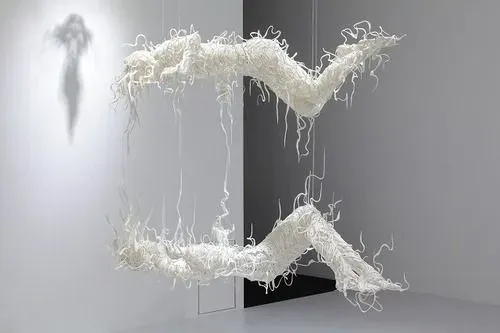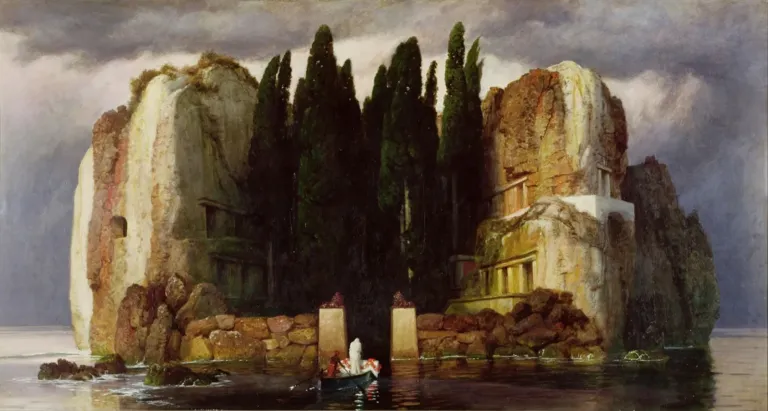The Isle of the Dead
“The Isle of the Dead” (1880) by Arnold Böcklin is one of the most famous and iconic works in art history.
This oil painting on canvas, measuring 111 centimeters high and 155 centimeters wide, depicts a mysterious island shrouded in mist, upon which rises a tall rock.
The lower part of the canvas is occupied by a small harbor, where a boatman is ferrying two hooded figures on a boat towards the island.
“The Isle of the Dead” is a work that arouses much curiosity and interest, both for its aesthetic beauty and its symbolic meaning.
The first version of the work was created by Böcklin himself in 1880, but the artist also produced five additional versions later, each with small differences from the previous one.
The meaning of the work has been the subject of many interpretations.
According to some theories, the island represents the transition from existence to death, while the hooded figure on the boat is believed to be Charon, the ferryman of the underworld in Greek mythology.
According to other interpretations, the island represents the realm of the dead, and the hooded figures could be souls in transit to the afterlife.
What is certain is that Böcklin’s work has influenced many other artists, including Max Ernst, Salvador Dalí, and René Magritte. Its iconic image has also been used in many films, books, and other forms of art.
Böcklin himself described the island as a “dream shore of a dead world” and admitted to creating the work without a clear allegorical or narrative intent. However, the image of the island is so powerful and evocative that it has left an indelible mark on Western visual culture.
Furthermore, Böcklin’s technique, with its attention to detail and texture, has made the island even more real and tangible. His painting has been described as a work of “painting magic,” capable of creating a suggestive and hypnotic atmosphere.
In conclusion, Arnold Böcklin’s “The Isle of the Dead” is an extraordinary work of art, capable of inspiring and fascinating viewers for over a century. Its aesthetic beauty and symbolic meaning make it a work of great cultural and artistic value, which continues to exert influence on contemporary culture.





